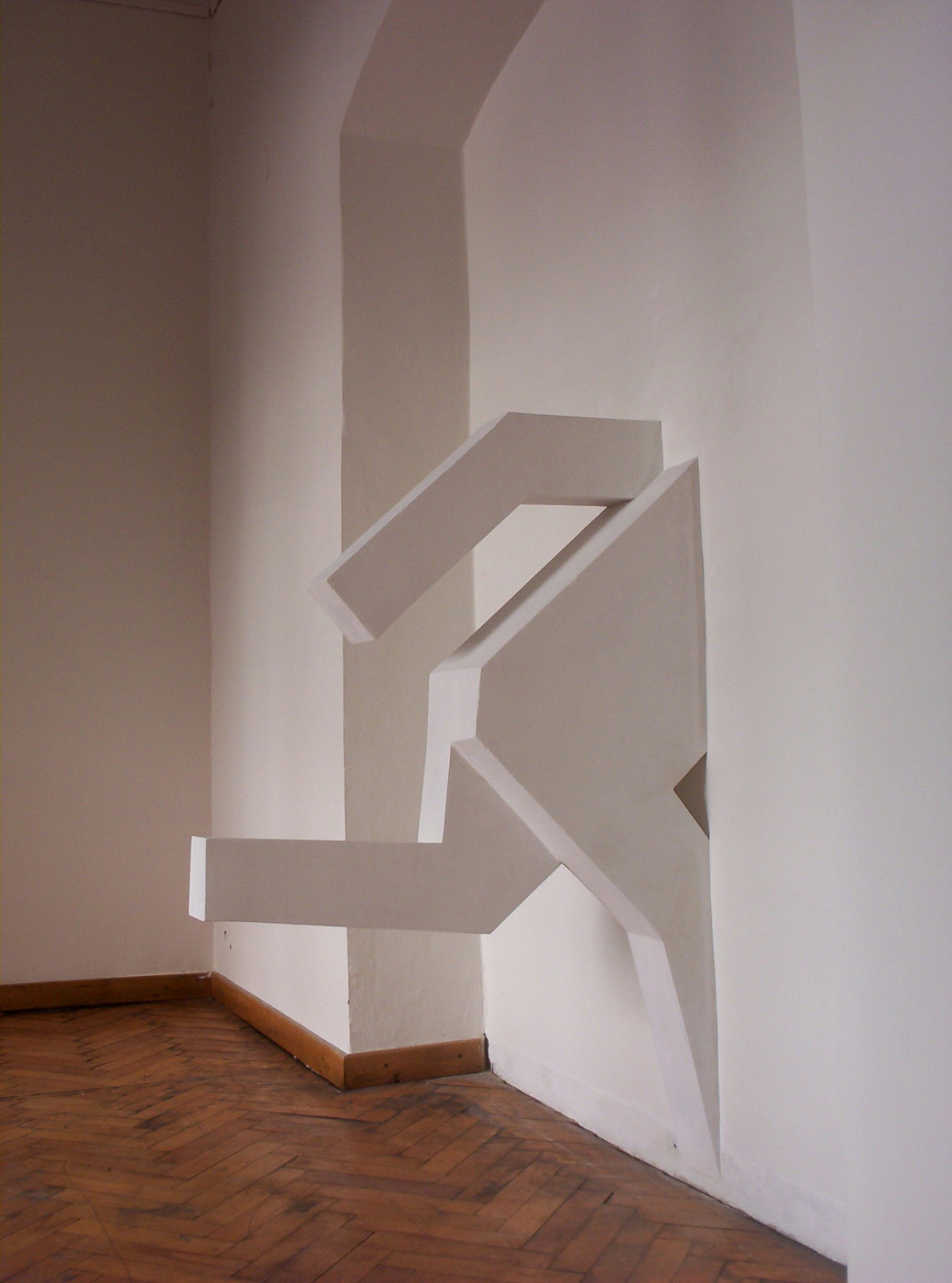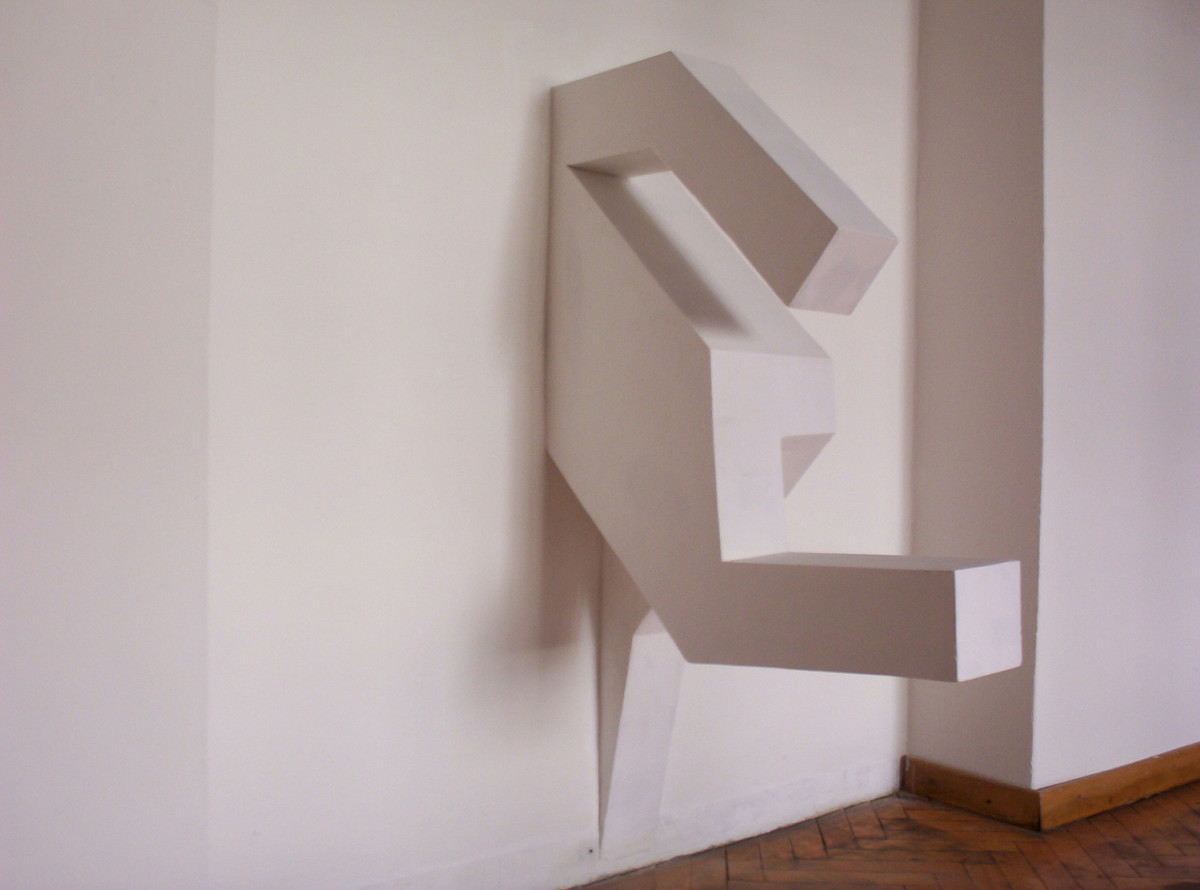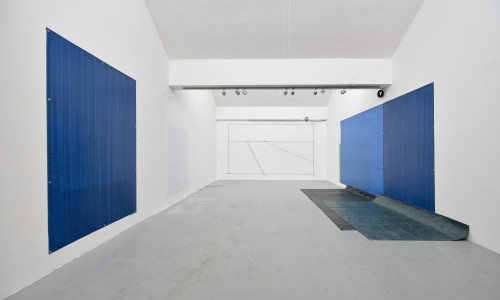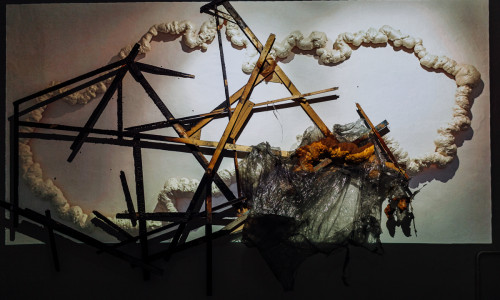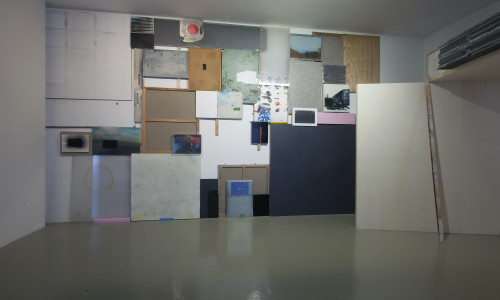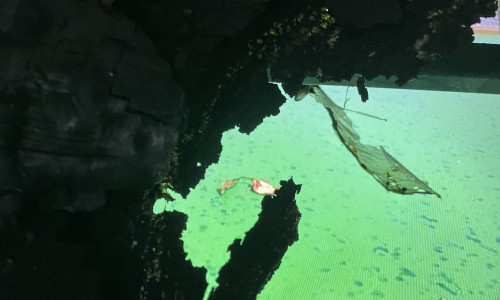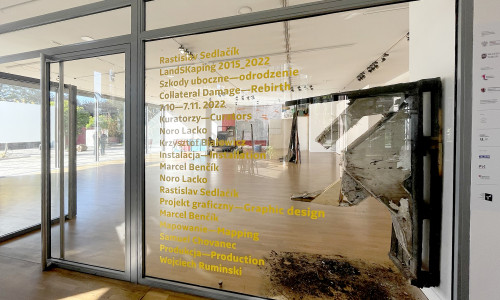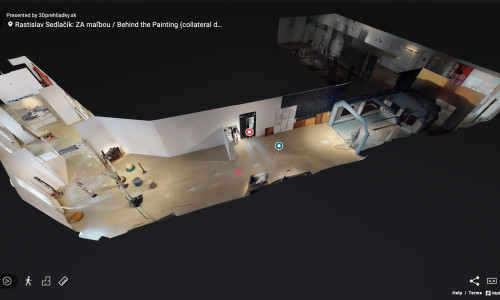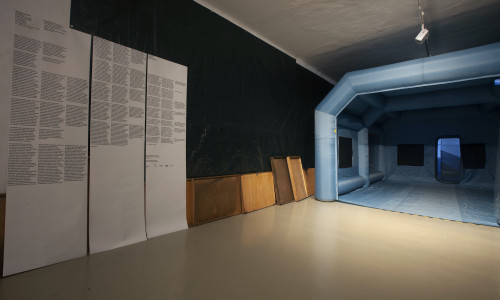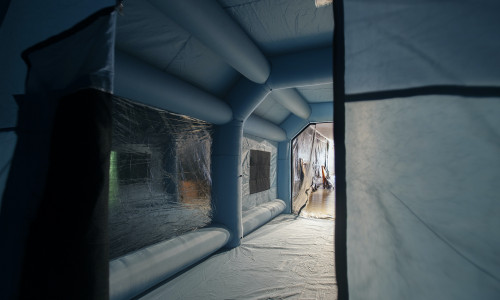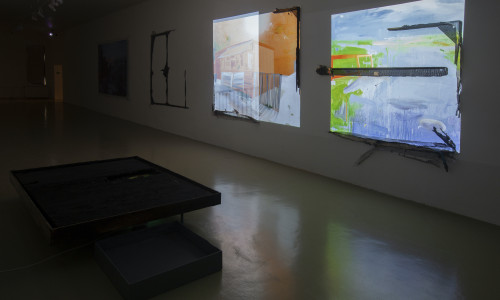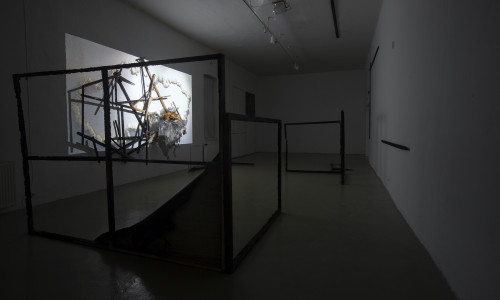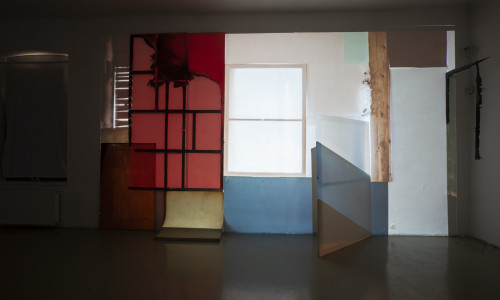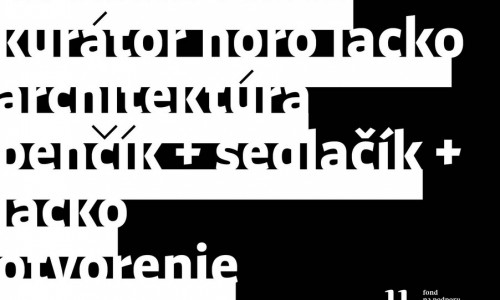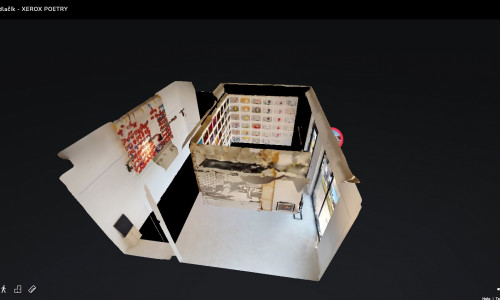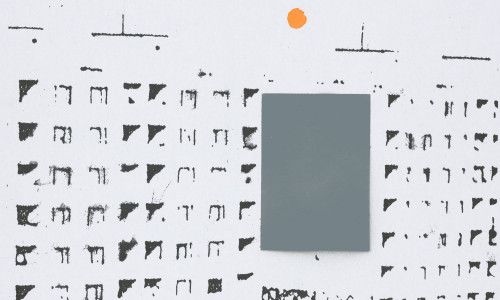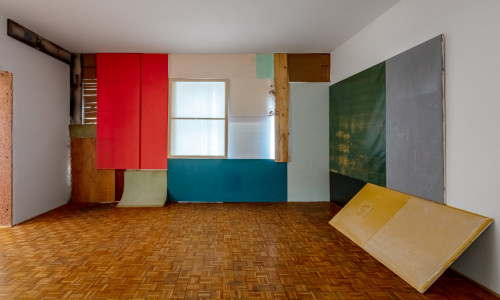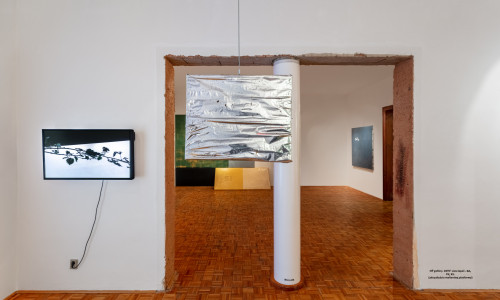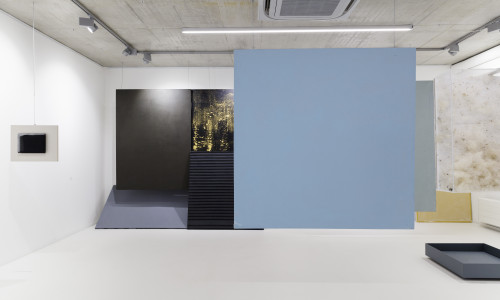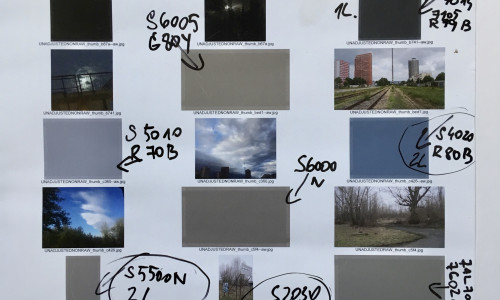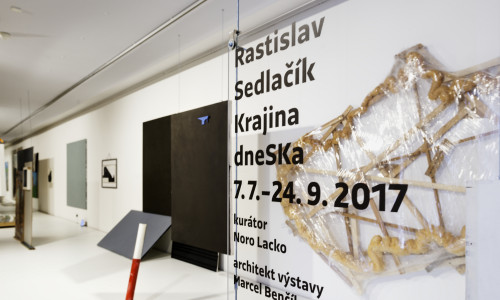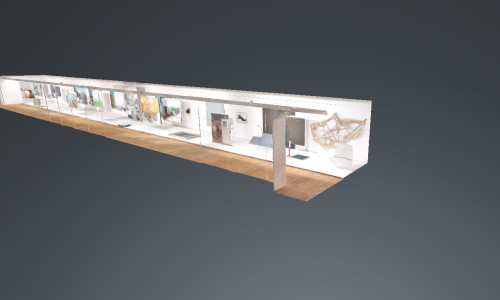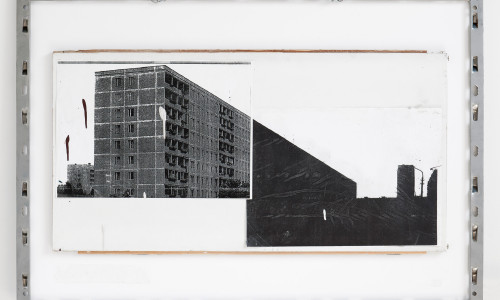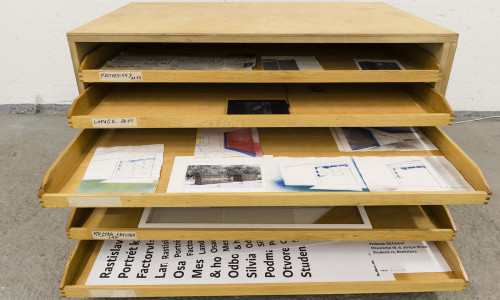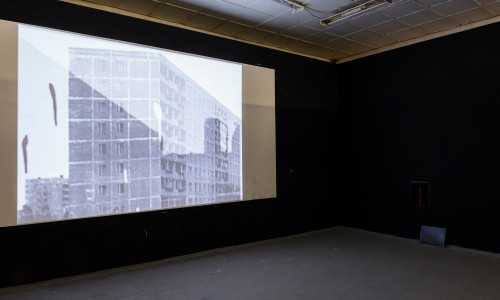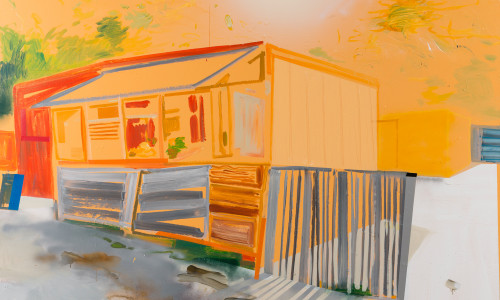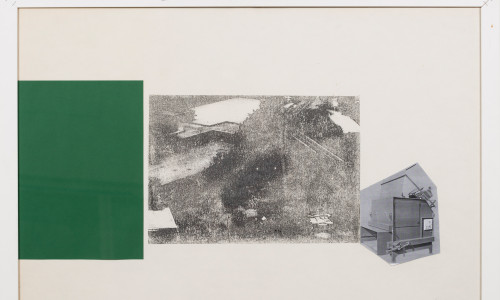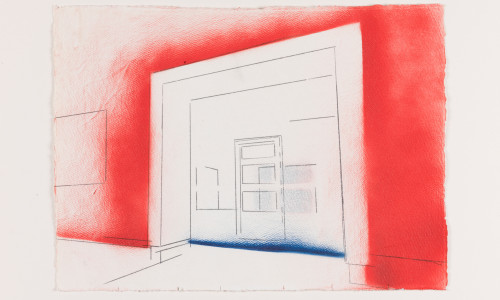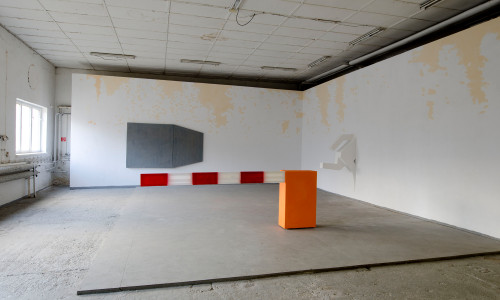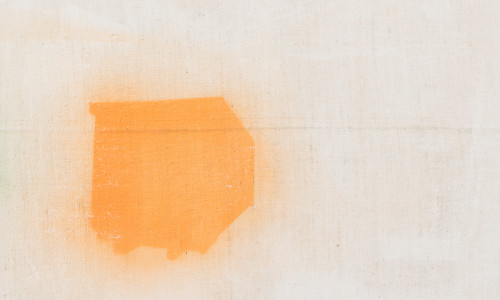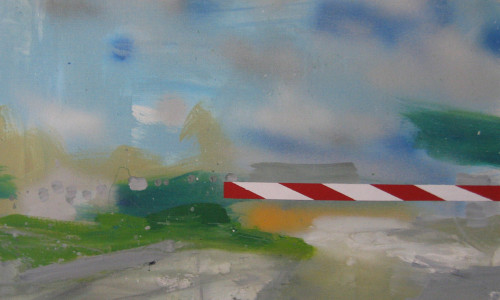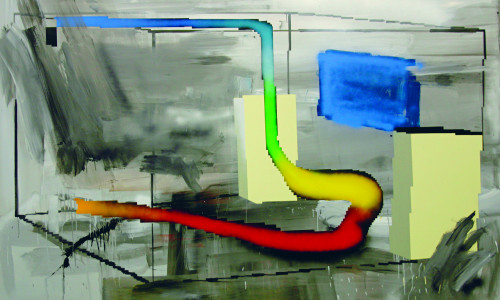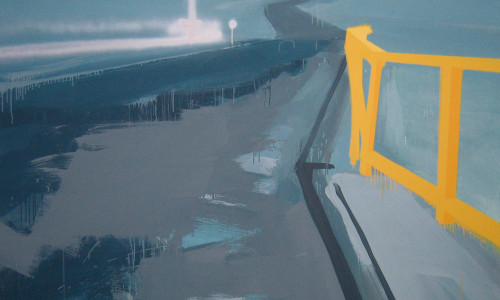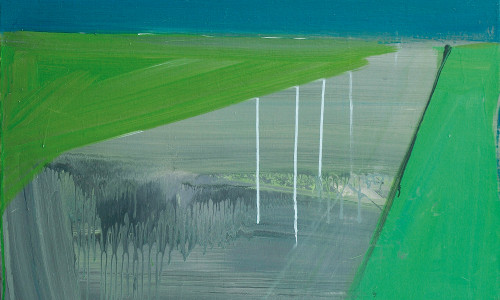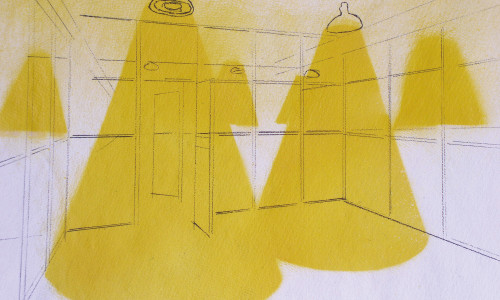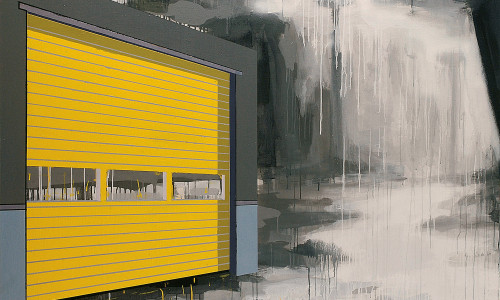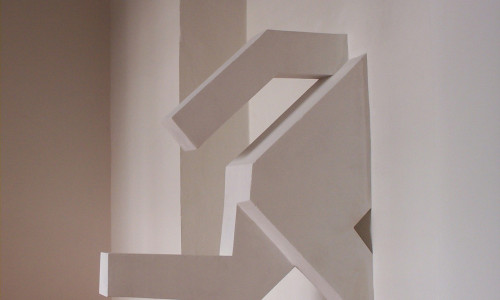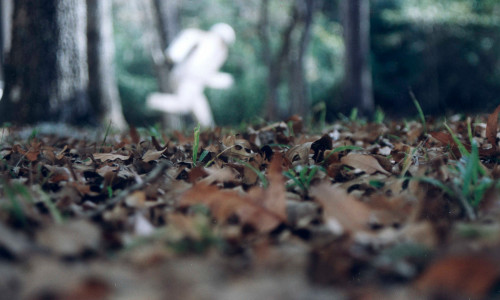enter- exit
Rastislav Sedlacik
galeria Medium
2003
„1 : 1“
Rastislav Sedlačík, Martin Sedlák
Venue: Medium Gallery, Bratislava
Exhibition Duration: 24. 7. – 23. 8. 2003
Curator: Michaela Fišerová
Scale of „1 : 1“
The exhibition “1:1” in Medium Gallery in Bratislava was a joint project of two artists of the youngest generation of Slovak art scene, Rastislav Sedlačík and Martin Sedlák, both of them students of Ivan Csundai studio at the Academy of Fine Arts and Design in Bratislava.
The name of the exhibition is likely to prompt questions. Why “1:1”? One to one is an arithmetic expression of a ratio of two identical quantities, which is why it is also the name of a scale or score. In our case, the scale determines the ratio of importance and significance in the visible, since works of art make visible the previously unseen reality. "1:1" therefore refers to the scale of authenticity and program in terms of artistic appraisal of reality. Yet we must not forget the reversibility of the relationship. "1:1" is also the measure of art in the space of our everyday reality.
Both of these positions change and overlap in reality and without the ability to read them, they merge into a continuous, indefinite unity of action. The exhibition "1:1" gives us two views and two possible orientations in such a varied area of interpretation.
Spatial objects and prints of Rasťo Sedlačík originate from the series of variable artistic creations on the topic of enter - exit / labyrinth /.
Characteristic leitmotif, which loosely connects most of Sedlačík exhibits, is the silhouette of a running figure.
This central character - pictogram of a running man - is depicted in the form of prints, but also in a three-dimensional form.
It appears as a luminous neon silhouette of a figure running up the three steps of an imaginary staircase, as an object with three characters running through cross-sectioned space, as a monumental adult-sized running figure, and finally as various other figures divided by vertical and transverse cuts into separate parts. Each torso is installed so that it gives the impression of a figure entering or leaving the walls of the exhibition space.
The spatial objects are technically created by combining multiple construction materials. The precision of their execution is reflected, besides the choice of a white monolith, in the emphasis on ‘technically’ precise, anonymous appearance of the final form. This encourages the audience to regard the artworks as an artistic reflection of a man as an object of standardised visual signs, derived from the field of information systems.
Considering this context, the size of several of the exhibits, which reach the size of an adult man and create an impression of gigantic three-dimensional pictograms, which already broke away from the limitations of the original informative destination, might be surprising.
Author’s creation attributed to them different communication status; the monumental pictogram is not only a sign of a human but also his specific competitor.
Another aspect of Sedlačík’s topic enter - exit / labyrinth / is that his objects and prints do not show us just any signs of figures, but exclusively figures running in space.
Passage through space is coded through implied staircase, tunnel or the passage of text on the display, the multiplication or phasing of the running figure and eventually even through the motion itself.
The artworks from the cycle enter - exit / labyrinth / primarily reflect the space from the view of potential movement within it. The identity of space is unstable, amorphous, open; as if it was constantly renewed through the number of interactions which occur in it.
Therefore, it also escapes any known definition and crosses limits, demarcating the space of our real movement. The artworks of Rastislav Sedlačík bring us closer to the imagined ‘labyrinth’ of informative markings - and through it also closer to the communication space of our reality.
This created a possibly ironic ‘tribute’ to offset lithography and pictograph figure as a sign, reduced to a visual norm. The most interesting aspect of the exhibition is the warning against the simplification of social communication. We can also notice that what is a simplistic labelling in the creation of pictograms is monumentalised in the creation of young artists. Inartistic informative pictures from the category of normative shape schemes primarily used for ‘seamless’ mass communication can be considered as a particular ‘prequel’ for these visual representations. ‘Correct’ reading of preprinted stereotypical picture and formally prescribed object assumed the knowledge of the language of information technology. It is this language that forms the specific anonymous visual communication, which permeates the current culture, coordinates the reality and becomes its integral part.
Undoubtedly, it is also under these circumstances that objects and images of its ‘prototype’ arise in the sphere of artistic reflection, visual norms as a sing of program-distorted communication.
At the exhibition “1:1," the dual distortion of this ‘prototype’ dually alerts us to possible loss of orientation in space of our everyday reality. Relative vector in the creation of both artists, which was just indicated here, should remind us that instructive ‘correctness’ tends to have shaky foundations in real life and that perfection is rarely exact. It is here that we might place the idea of the exhibition mapping instructive labelling through art, the opportunity to show object and image as specific ‘maps’ and markers of our potential roads and pathways. By reinforcing the size of some of the motives of the banality of reality, they achieve a semantic match in the artistic sphere. Both banalities, the seemingly ‘small’ in reality and the obviously ‘large’ in art, are therefore equal in meaning. The score is, therefore, balanced - 1:1.
Michaela Fišerová
FIŠEROVÁ, Michaela: Scale of 1:1. In: Profil (Cicle of Contemporary Art Profile), 10, 2003, 3, 98-109 .
